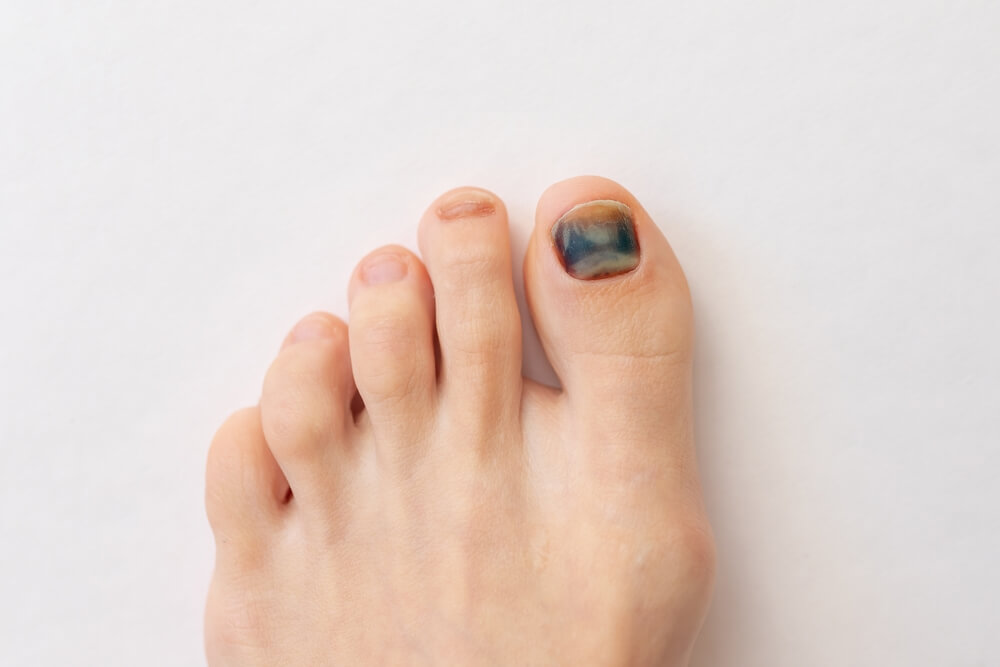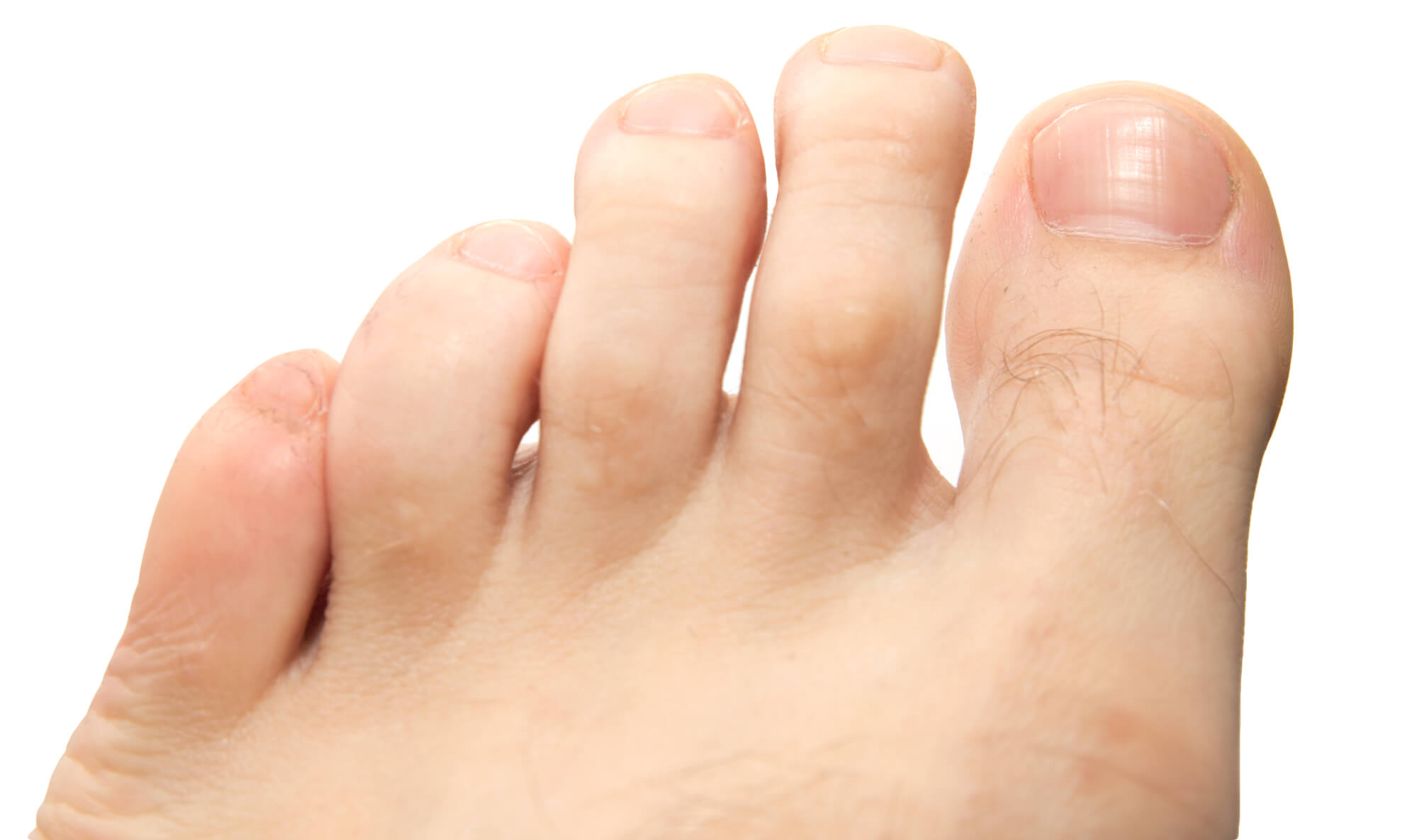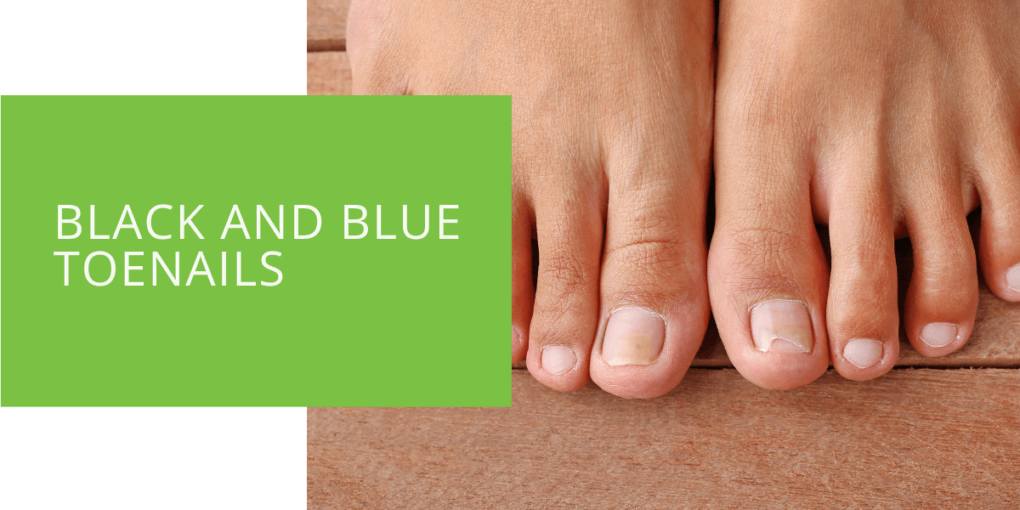Black and Blue Toenails
Black and blue toenails, also known as subungual hematomas, are common foot conditions that various factors can cause. They are characterized by a bruise or discoloration of the toenail, which can be black, blue, or even green. While this condition may not always be serious, taking proper care of your feet and seeing a podiatrist if you are experiencing symptoms is important.
Common Causes of Black and Blue Toenails
There are several common causes of black and blue toenails. The most common cause is trauma to the toenail, such as stubbing your toe or dropping something heavy on it. Fungal infections can also cause discoloration of the toenails and certain medical conditions such as peripheral artery disease. Wearing ill-fitting shoes can also contribute to developing black and blue toenails.

Symptoms and Diagnosis
The most obvious symptom of black and blue toenails is discoloration of the toenail. However, you may also experience pain and tenderness in the affected area. To diagnose the condition, a podiatrist will typically perform a physical examination of the foot and may also take a sample of the affected nail to test for a fungal infection.
Treatment and Prevention
Treatment for black and blue toenails will depend on the underlying cause. If the condition is caused by trauma, it will typically resolve over time. However, if a fungal infection causes discoloration, your podiatrist may prescribe antifungal medication. If a medical condition such as peripheral artery disease is the underlying cause, treatment will address that condition.
To prevent black and blue toenails, it is important to take proper care of your feet and to wear properly fitting shoes. Avoiding trauma to the toenails and keeping your feet clean and dry can also help to prevent the development of fungal infections.

When to See a Podiatrist
If you are experiencing black and blue toenails symptoms, you must see a podiatrist for proper diagnosis and treatment. See a doctor if you notice any changes in the color or shape of your toenails, as these can be signs of a more serious condition such as melanoma.
Conclusion
Black and blue toenails are common foot conditions that various factors, such as trauma, fungal infections, and certain medical conditions, can cause. While the condition is usually not serious, taking proper care of your feet and seeing a podiatrist if you are experiencing symptoms is important. By understanding the common causes of black and blue toenails and taking steps to prevent them, you can help to keep your feet healthy and pain-free.
FAQ
Why are my toenails turning black and blue?
Toenails can turn black and blue for various reasons, such as trauma, fungal infections, and certain medical conditions. It is important to see a podiatrist to determine the underlying cause of your discolored toenails.
How do you get rid of black and blue under toenails?
Treatment for black and blue toenails will depend on the underlying cause. If the condition is caused by trauma, it will typically resolve over time. However, if a fungal infection causes discoloration, your podiatrist may prescribe antifungal medication. If a medical condition such as peripheral artery disease is the underlying cause, treatment will address that condition.
When should I worry about a bruised toenail?
You should see a doctor if you notice any changes in the color or shape of your toenails, as these can be signs of a more serious condition such as melanoma. If you experience pain, swelling, or redness, it is best to seek professional help.
How do you treat black and blue nails?
Treatment for black and blue toenails will depend on the underlying cause. If the condition is caused by trauma, it will typically resolve over time. However, if a fungal infection causes discoloration, your podiatrist may prescribe antifungal medication. If a medical condition such as peripheral artery disease is the underlying cause, treatment will address that condition. In addition, preventing trauma to the toenails and keeping your feet clean and dry can also help to prevent the development of fungal infections.

